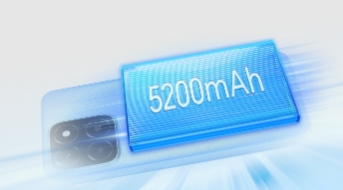Smartphone batteries gradually lose capacity over time, but many users struggle to recognize when replacement becomes necessary. A failing battery doesn't just inconvenience you with frequent charging - it can unexpectedly shut down during important moments or even become a safety hazard. Modern lithium-ion batteries typically maintain good performance for 2-3 years before noticeable degradation occurs. However, certain usage patterns and environmental factors can accelerate this process. In this article, we'll explore the clear warning signs that indicate your battery needs replacement, helping you avoid unexpected power failures and potential device damage.

Performance Red Flags You Can't Ignore
Random Shutdowns at High Battery Percentage
One of the most frustrating signs of battery failure is when your phone powers off unexpectedly while showing 30%, 40% or even 50% remaining charge. This occurs because the battery can no longer deliver consistent voltage under load - when you open a demanding app or use the camera, the sudden power requirement causes voltage to drop below the device's operational threshold. The percentage reading becomes unreliable because the battery management system can't properly calibrate with the degraded cells. If your phone consistently shuts down above 20% charge and only turns back on when plugged in, the battery has likely reached its end of life. This problem often worsens in cold environments as battery performance naturally decreases in low temperatures.
Extremely Fast Battery Drain
While all batteries lose capacity over time, excessive drain indicates serious degradation. If your phone that once lasted a full day now struggles to make it to lunchtime with similar usage, the battery cells are probably failing. Pay attention to whether this drain happens during active use or just in standby mode - rapid drain during use suggests the battery can't sustain normal loads, while standby drain may indicate software issues. Try comparing your drain rate to when the device was new; losing more than 10% per hour during light use typically signals battery problems. Keep in mind that some apps or system processes can also cause abnormal drain, so check your battery usage statistics before concluding it's a hardware issue.
Longer Charging Times Than Usual
A healthy battery should charge at relatively consistent speeds throughout its lifespan. If you notice your phone taking significantly longer to reach full charge using the same charger and cable, this suggests increased internal resistance in the battery cells. Degraded batteries often charge slowly because they can't efficiently accept and store energy anymore. You might observe particularly slow charging between 80-100% as the battery management system struggles to balance the weakened cells. Some devices may even stop charging temporarily when detecting unstable voltage from a failing battery. If charging times have increased by 30-50% compared to when the device was new, replacement should be considered.
Physical Symptoms of Battery Failure
Visible physical changes often provide the clearest evidence of battery failure. A swollen battery is the most dangerous sign - you may notice the back cover bulging, the screen lifting, or the device no longer lying flat on surfaces. This swelling occurs when internal chemical reactions produce gas, and it poses serious safety risks including potential combustion. Other physical signs include excessive heat during normal use or charging, which indicates the battery is working harder than it should. Some users report a "chemical" or "sour" smell coming from their device, another warning of battery breakdown. If your phone feels unusually hot to the touch during light tasks or the case appears distorted, stop using it immediately and seek professional assistance.

Software Indicators of Battery Problems
Modern operating systems include built-in tools to monitor battery health. Many devices now show battery capacity percentage in settings, indicating how much original capacity remains. Values below 80% typically mean the battery can't reliably power the device through a full day. Some systems display warnings like "Service Recommended" when detecting significant degradation. Battery usage statistics may reveal abnormal behavior, such as sudden drops in percentage rather than smooth declines. Diagnostic apps can provide more detailed information like charge cycles completed and current maximum capacity. However, these software indicators aren't always perfectly accurate - they should be considered alongside physical symptoms and performance issues for a complete assessment.
When to Repair vs. Replace Your Device
Cost Analysis: Battery Replacement vs. New Phone
The decision between replacing your battery or upgrading your device depends on several factors. Battery replacement typically costs 20-30% of a new phone's price, making it economical for relatively new devices. Consider whether your phone still meets your performance needs - if it's already struggling with current apps and updates, investing in a new battery may only provide temporary relief. Also factor in potential additional repairs; an older phone might need screen or port repairs soon after battery replacement. For devices more than three years old, the combined cost of battery replacement and potential future repairs often makes upgrading the wiser financial choice.
How Age Affects Battery Replacement Decisions
Phone technology advances rapidly, and older devices may lack modern battery optimization features. Even with a new battery, a phone using 3-4 year old processor technology will be less power efficient than current models. Security updates also play a role - if your device no longer receives operating system updates, replacing the battery won't address potential vulnerabilities. However, if you have a premium device that's only 1-2 years old and otherwise functions well, battery replacement can extend its useful life significantly. Environmental considerations matter too - keeping a functional device longer reduces electronic waste, making battery replacement the more sustainable choice when practical.
Conclusion
Recognizing battery failure signs early helps prevent inconvenient shutdowns and potential safety hazards. If you experience random power-offs, rapid draining, swelling, or significant capacity loss, it's time to consider replacement. For those prioritizing battery longevity, devices like the HONOR X5b Cell phone with eXtra Power 5200mAh Long-lasting Battery offer excellent endurance if you're considering upgrading to a long-lasting model. Whether you choose professional battery replacement or a new device, addressing battery issues promptly ensures reliable performance. Remember that all batteries eventually wear out - with proper attention to the warning signs, you can make informed decisions about when and how to replace yours.
